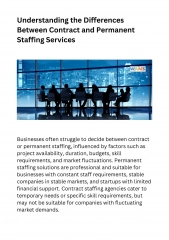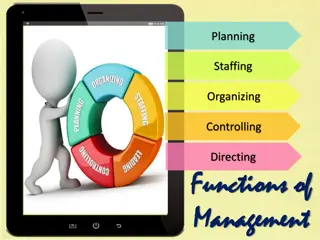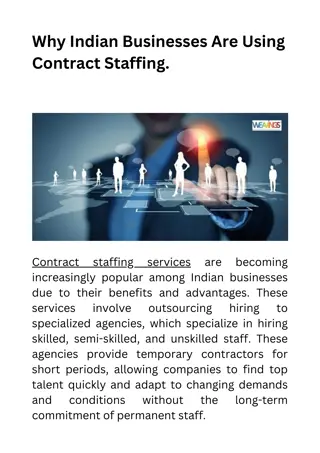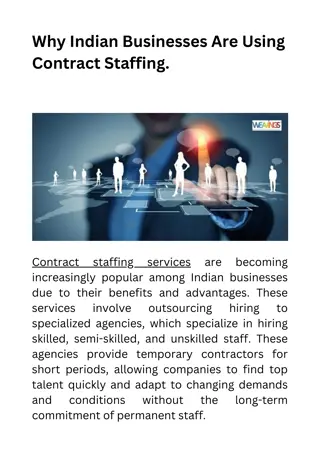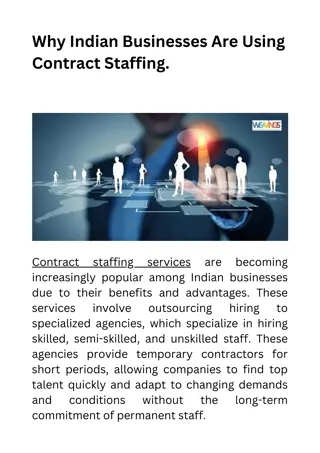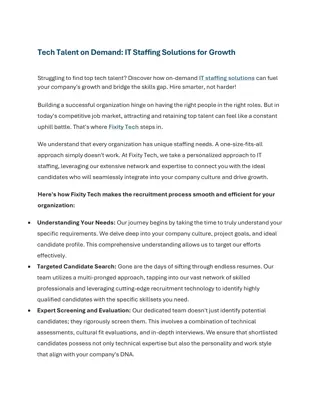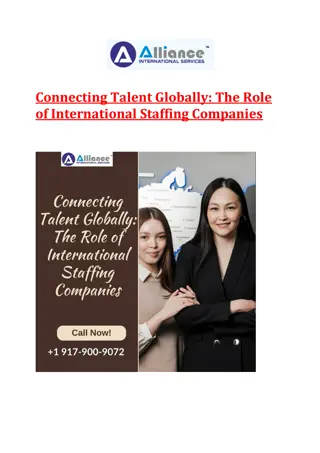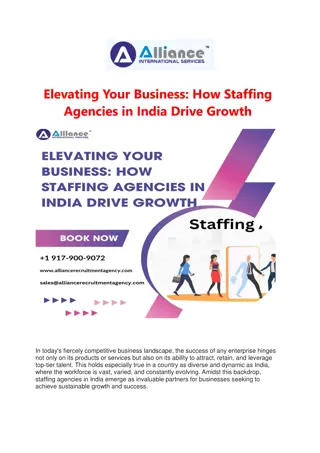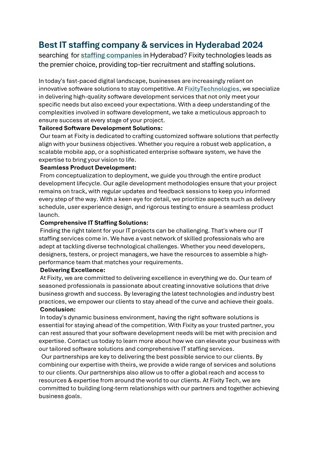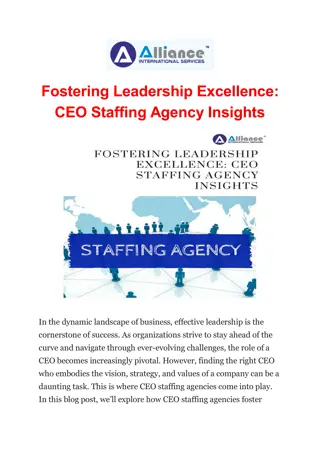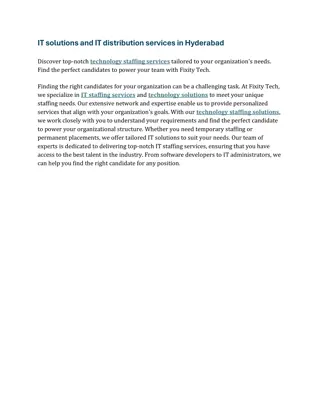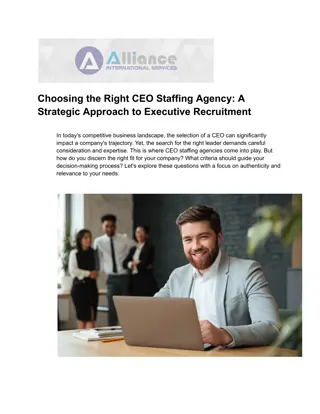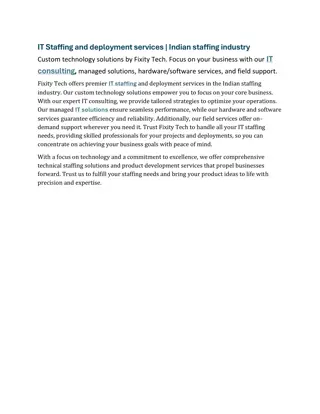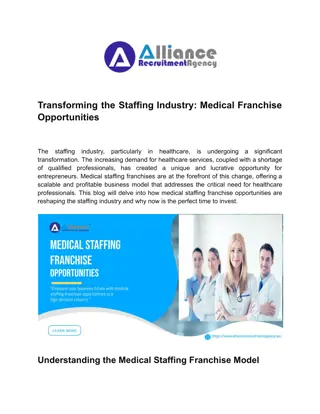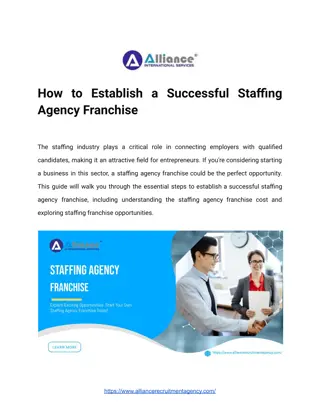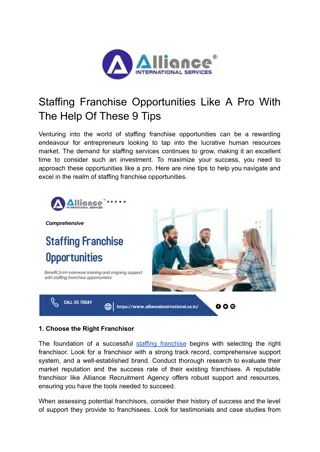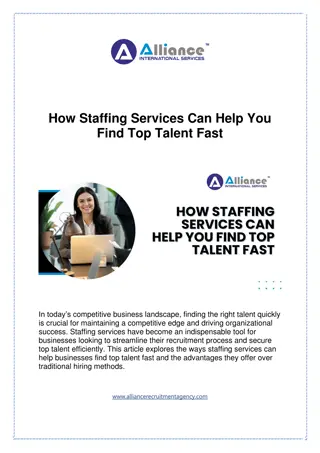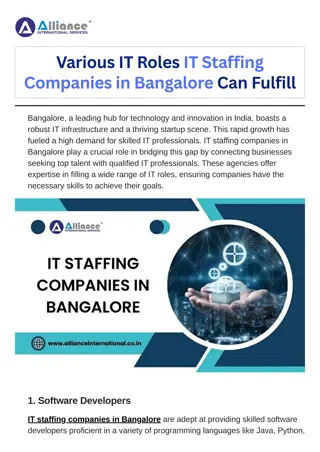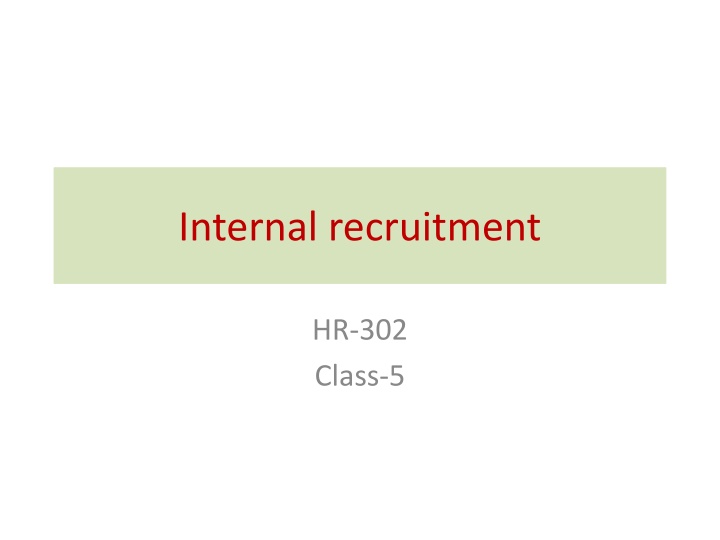
Effective Internal Recruitment Strategies for Organizations
Learn about the benefits of internal recruitment, recruitment planning, mobility paths, and administrative issues in the internal recruitment process. Internal recruitment advantages include familiarity with organizational culture, less training needs, and existing relationships with coworkers. Recruitment planning involves creating structured job paths and mobility policies. Mobility paths depict upward and alternative career progressions, while administrative issues address requisitions, policy documentation, and coordination efforts between internal and external professionals.
Download Presentation

Please find below an Image/Link to download the presentation.
The content on the website is provided AS IS for your information and personal use only. It may not be sold, licensed, or shared on other websites without obtaining consent from the author. If you encounter any issues during the download, it is possible that the publisher has removed the file from their server.
You are allowed to download the files provided on this website for personal or commercial use, subject to the condition that they are used lawfully. All files are the property of their respective owners.
The content on the website is provided AS IS for your information and personal use only. It may not be sold, licensed, or shared on other websites without obtaining consent from the author.
E N D
Presentation Transcript
Internal recruitment HR-302 Class-5
Staffing Organizations Model Organization Mission Goals and Objectives Organization Strategy HR and Staffing Strategy Staffing Policies and Programs Support Activities Core Staffing Activities Legal compliance Recruitment: External, internal Selection: Measurement, external, internal Employment: Decision making, final match Planning Job analysis Staffing System and Retention Management 4-2
Internal recruitment Internal recruitment is the process of identifying and attracting current employees for open jobs. Internal recruitment advantages : 1- the employees already know the organization s culture. 2- they need less training. 3- they have relationship with coworkers.
Internal recruitment Recruitment planning. Strategy development.
Recruitment planning Before identifying and attracting internal applicants to vacant jobs some attention must be directed to some issues. 1- Organization Issues: organization must create a structured set of jobs for their employees and paths of mobility for them to follow as they advance in their career. To do this organization create internal labor market. Internal labor market have two components: 1-Mobility path 2- Mobility policies
Recruitment planning 1-Mobility path: depict the path of mobility between jobs. Hierarchical mobility paths Upward mobility in the organization. Alternative mobility paths Up, down, and side to side. 2-Mobility policies: cover the operational requirements needed to move between jobs. Development: employees are likely to see a well- articulated and well- executed mobility path policy as fair. A poorly developed policy is likely to lead to employees claims of favoritism and discrimination. Eligibility criteria: listing of the criteria by which the organization will decide who is eligible to be considered for a vacancy in a mobility path.
Recruitment planning 2-Administrative issues: A requisition is a formal document that authorizes the filling of a job opening indicated by signatures of top managements. Documenting that consistent business related policies are followed for internal mobility also helps ensure that the system is legally defensible. Coordination: internal and external professionals must work together with the line manager to coordinate efforts before the search for candidates begins.
Recruitment planning Budget: the cost per hire in internal recruitment is not necessarily less than the cost per hire for external recruitment. Recruitment guide: A formal document that details the process to be followed to attract applicants to a vacant job. Timing: Lead time concerns: the major difference between internal and external recruitment is that internal recruitment not only fills vacancies but also create them. Time sequence concerns: Many organizations start with internal recruitment followed by external recruitment to fill a vacancy.
Strategy Development 1- Closed Recruitment Definition :Employees are not informed of job vacancies. The only people made aware of promotion or transfer opportunities are: Who oversee placement in the HR department . line managers with vacancies. Contacted employees. Advantages: efficient, few steps to follow, less cost &time. Disadvantages: It depends on the information that are in the employees files, if the files are inaccurate qualified employees may be overlooked. So,employees talents are covered.
Strategy Development 2- Open Recruitment Definition: Employees are made aware of job vacancies. Advantages: Gives employees chance to measure their qualification. Helps minimize the possibility that supervisors will select favorite employee. Hidden talent is uncovered. Disadvantages: Create unwanted competition among employees for limited opportunities. Time consuming.
Strategy Development 3- Hybrid system Definition Jobs are posted, and the HR department conducts a search ,both systems are used to cast as wide a net as possible Advantages Thorough search is conducted. People have equal opportunity to apply for postings. Hidden talent is uncovered. Disadvantages Very time-consuming and costly process.

